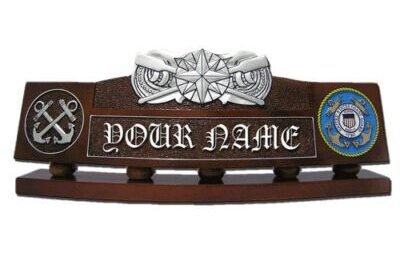Vapor Liq
Where Innovation Meets Flavor!The Enduring Status of a Personalized Military Desk Nameplates
Wednesday , 24, September 2025 Gift Ideas Comments Off on The Enduring Status of a Personalized Military Desk NameplatesIn the hallowed halls of military command, where rank, duty, and tradition converge, certain objects transcend their simple function to become powerful symbols. Among these, the personalized, hand-carved military desk nameplate stands out as a unique and enduring status symbol. Far from being a mere identifier, this bespoke piece of craftsmanship speaks volumes about an officer’s career, their character, and the respect they have earned. In a world increasingly dominated by mass production and digital displays, the handcrafted nameplate is a tangible testament to a life of service, a legacy etched in wood.

The history of the military nameplate is rooted in practicality. It served to quickly identify an officer’s rank and last name in a fast-paced environment. However, as the military evolved and officers sought ways to express individual identity while adhering to strict uniform codes, the simple plastic or brass plate gave way to something more personal and profound. The transition to a hand-carved piece was a natural evolution, mirroring the value the military places on precision, dedication, and the human element.
What elevates a hand-carved nameplate to a status symbol is the deliberate artistry involved. These are not factory-stamped items but unique creations, often commissioned from skilled artisans, many of whom are veterans themselves. The wood itself is often carefully selected—rich cherry, dark walnut, or sturdy oak—each with its own grain and character. The lettering is not a font but a testament to a steady hand, often carved in deep relief, creating a play of light and shadow that a flat plate can never achieve. This level of detail signifies a commitment to excellence, a quality highly valued within military culture.
Beyond the aesthetics, the personalization of these nameplates is what truly imbues them with meaning. An officer might choose to have their full name, rank, and branch of service proudly displayed. More personalized versions might include the emblem of their unit, a specific military campaign ribbon they served in, or even a small, symbolic carving that represents a significant moment in their career. A submarine officer might have a carved dolphin insignia; an aviator, the wings of a pilot. These small details are not for public consumption but serve as a personal chronicle, a visual biography of their military journey.
The acquisition of such a nameplate is often tied to a promotion, a change of command, or a significant posting. It’s a gift from a subordinate unit, a token of respect and appreciation. A junior officer might have a simple, standard-issue plate, but the presentation of a hand-carved one marks a rite of passage. It signifies that they have not only reached a certain rank but have also earned the respect of their peers and subordinates. It’s a tangible expression of “Sir, you have earned this.”
Furthermore, the nameplate is a link to tradition and a symbol of legacy. It often sits prominently on the desk of an officer in their office, a silent testament to their achievements. It’s not just a sign; it’s a piece of their personal history, a constant reminder of the sacrifices and triumphs that have defined their career. When an officer retires, the nameplate is often one of the most cherished mementos they take with them, a tangible piece of their service to display proudly in their home.
In a world where status is often measured by fleeting digital metrics or ostentatious displays, hand-carved military desk name plates offers a different kind of prestige. Its value is not in its monetary cost but in the history, the artistry, and the profound respect it represents. It is a quiet, dignified symbol of a life dedicated to service, a piece of wood that tells a story far more compelling than any words could convey. It is more than a name; it is a legacy.